These are the approximate positions of the U.S. Navy’s deployed carrier strike groups and amphibious ready groups throughout the world as of May 17, 2021, based on Navy and public data. In cases where a CSG or ARG is conducting disaggregated operations, the chart reflects the location of the capital ship.
Total U.S. Navy Battle Force:
296
Ships Underway
| Deployed Ships Underway | Non-deployed Ships Underway | Total Ships Underway |
| 60 | 36 | 96 |
Ships Deployed by Fleet
| Fleet Forces | 3rd Fleet | 4th Fleet | 5th Fleet | 6th Fleet | 7th Fleet | Total |
| 0 | 8 | 2 | 19 | 21 | 52 | 102 |
In Japan
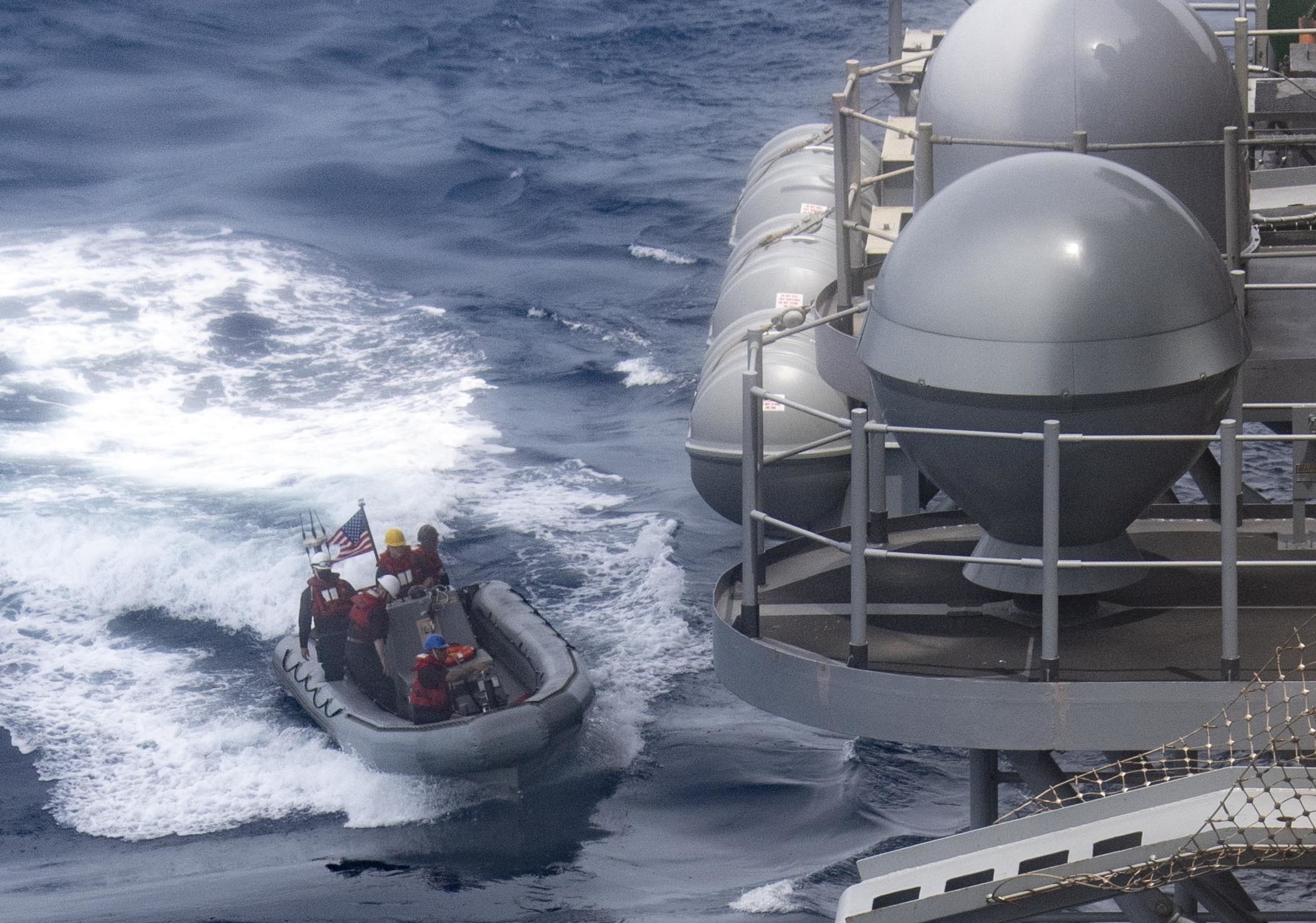
Sailors assigned to the forward-deployed amphibious assault ship USS America (LHA-6) conduct small boat operations on May 15, 2021. US Navy Photo
USS America (LHA-6) is in port in Sasebo, Japan.
In the Philippine Sea
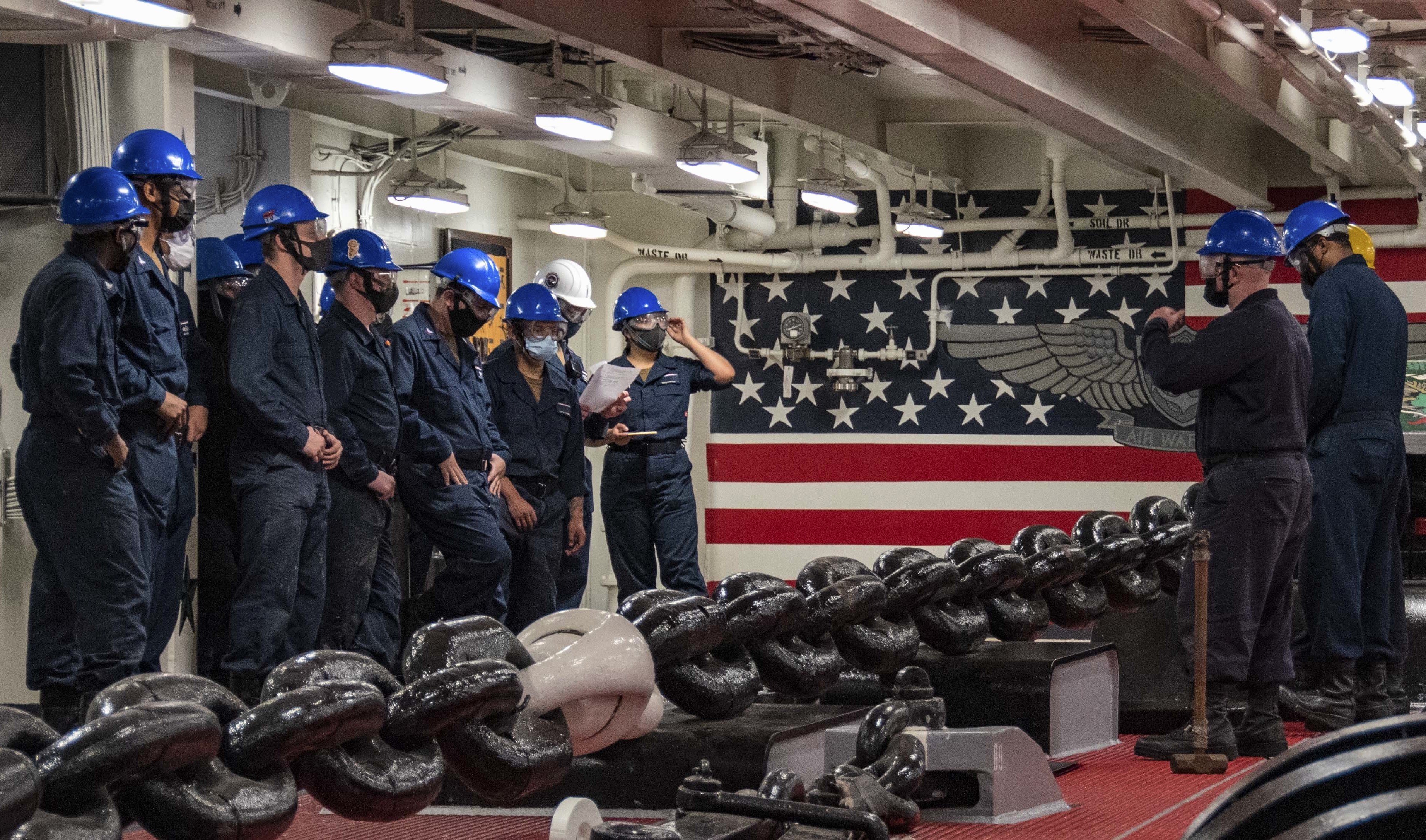
Deck department Sailors assigned to the U.S. Navy’s only forward-deployed aircraft carrier USS Ronald Reagan (CVN-76), prepare to conduct an anchor drop test in the forecastle during sea trials on May 11, 2021. US Navy Photo
USS Ronald Reagan (CVN-76) is underway for sea trials after completing its winter maintenance period in Yokosuka.
Reagan’s selected restricted availability (SRA) was “conducted by Puget Sound Naval Shipyard (PSNS) & Intermediate Maintenance Facility (IMF) Detachment Yokosuka employees, along with PSNS & IMF and Norfolk Naval Shipyard employees on temporary duty to Japan and the Ship Repair Facility in Yokosuka,” according to the service.
In the Gulf of Alaska
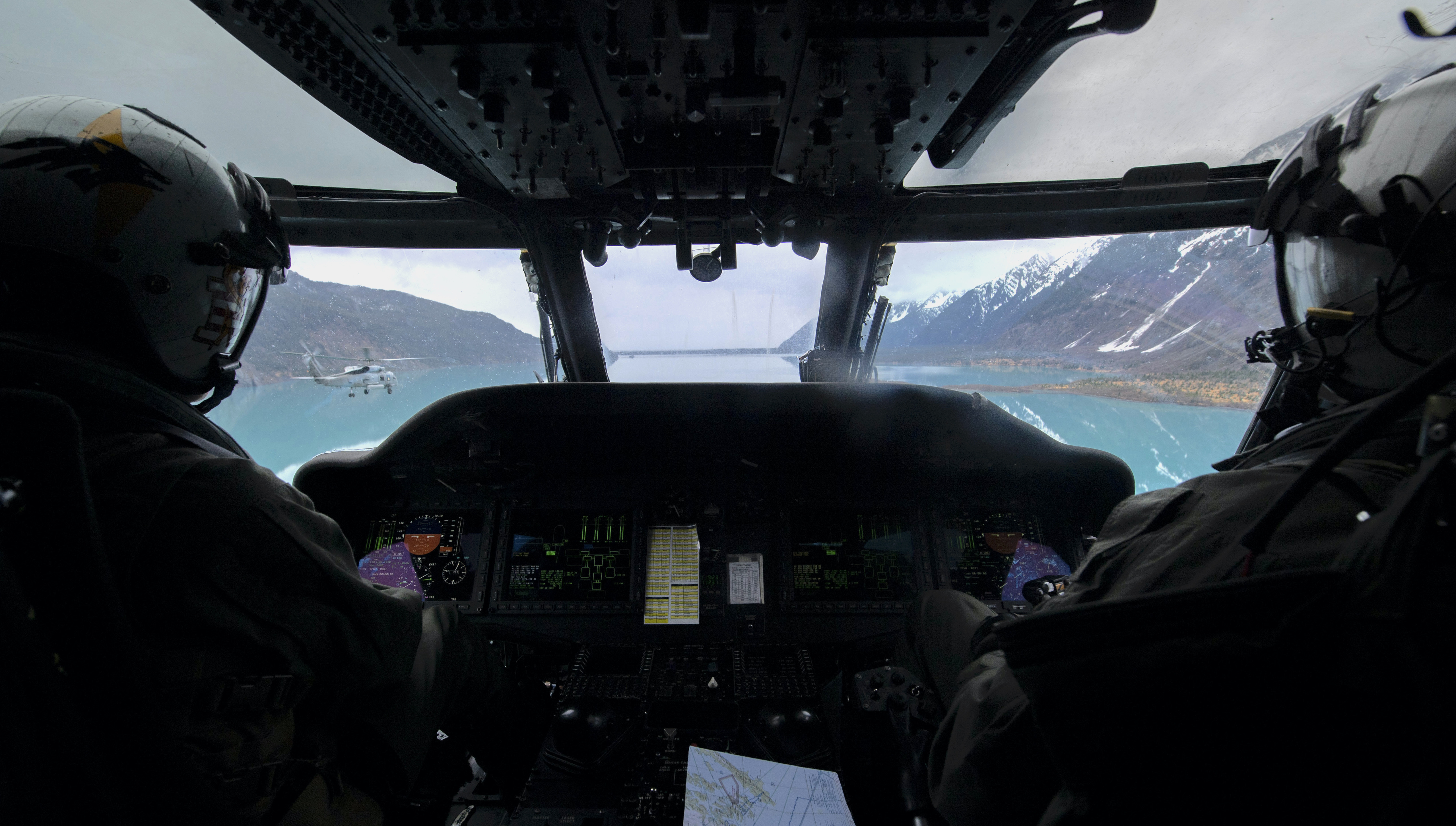
U.S. Navy Cmdr. Thomas Mashuda, from Pittsburgh, right, and Lt. Nikki Moyle, from Fredrick, Md., pilot an MH-60R Sea Hawk, assigned to the ‘Wolf Pack’ of Helicopter Maritime Strike Squadron (HSM) 75, over the Gulf of Alaska on May 10, 2021. US Navy Photo
The Theodore Roosevelt Carrier Strike Group is in the Gulf of Alaska participating in exercise Northern Edge 2021, which started May 3. The exercise includes USS Theodore Roosevelt (CVN-71), its escorts and Carrier Air Wing 11. It also includes the Makin Island Amphibious Ready Group and embarked 15th Marine Expeditionary Unit, as well as other joint U.S. military units. Events in the exercise have been held across a wide area, from the Aleutian Islands to deep into the interior of Alaska.
The ARG includes amphibious assault ship USS Makin Island (LHD-8) and amphibious transport docks USS San Diego (LPD-22) and USS Somerset (LPD-25). The 15th MEU includes the Command Element; the Aviation Combat Element composed of Marine Medium Tiltrotor Squadron 164 (Reinforced); the Ground Combat Element composed of Battalion Landing Team 1/4; and the Logistics Combat Element composed of Combat Logistics Battalion 15. Other units include Helicopter Sea Combat Squadron 23, Helicopter Maritime Strike Squadron 49, Tactical Air Control Squadron 11, Beach Master Unit 1, and Fleet Surgical Team 1 from San Diego and Assault Craft Unit 5 from Camp Pendleton, Calif.
Carrier Strike Group 9
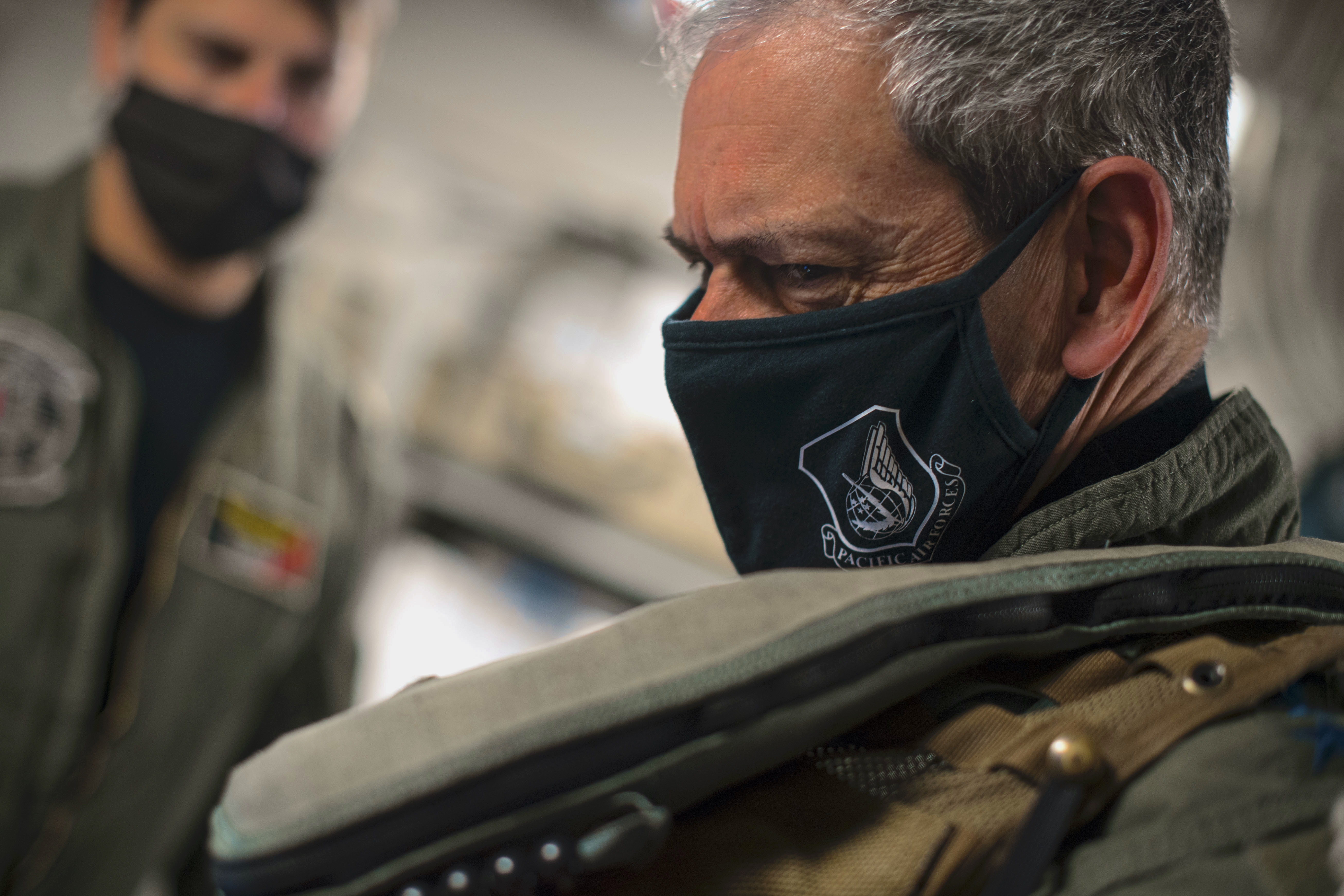
U.S. Air Force Gen. Ken Wilsbach, commander, Pacific Air Forces, adjusts his flight suit equipment aboard the aircraft carrier USS Theodore Roosevelt (CVN-71) on May 10, 2021, in the Gulf of Alaska during Exercise Northern Edge 2021 (NE21). US Navy Photo
Aircraft carrier
USS Theodore Roosevelt (CVN-71), homeported in San Diego, Calif.
Carrier Air Wing 11

Aviation Boatswain’s Mate (Handling) 3rd Class Austin Sonnier, from Lake Charles, Louisiana signals the pilot of an EA-18G Growler, assigned to the ‘Gray Wolves’ of Electronic Attack Squadron (VAQ) 142, before it launches from the flight deck of the aircraft carrier USS Theodore Roosevelt (CVN-71) on May 12, 2021. US Navy Photo
Carrier Air Wing (CVW) 11, based at Naval Air Station Lemoore, Calif., is embarked aboard Theodore Roosevelt and includes a total of nine squadrons and detachments:
- The “Tomcatters” of VFA-31 – Strike Fighter Squadron (VFA) – from Naval Air Station Oceana, Va.
- The “Golden Warriors” of VFA-87 from Naval Air Station Oceana, Va.
- The “Blue Diamonds” of VFA-146 from Naval Air Station Lemoore, Calif.
- The “Black Knights” of VFA-154 from Naval Air Station Lemoore, Calif.
- The “Gray Wolves” of VAQ-142 – Electronic Attack Squadron (VAQ) – from Naval Air Station Whidbey Island, Wash.
- The “Liberty Bells” of VAW-115 – Carrier Airborne Early Warning Squadron (VAW) – from Naval Air Station Point Mugu, Calif.
- The “Providers” of VRC-30 – Detachment – Fleet Logistics Support Squadron (VRC) – from Naval Air Station North Island, Calif.
- The “Eight Ballers” of HSC-8 – Helicopter Sea Combat Squadron (HSC) – from Naval Air Station North Island, Calif.
- The “Wolf Pack” of HSM-75 – Helicopter Maritime Strike Squadron (HSM) – from Naval Air Station North Island, Calif.
Cruiser
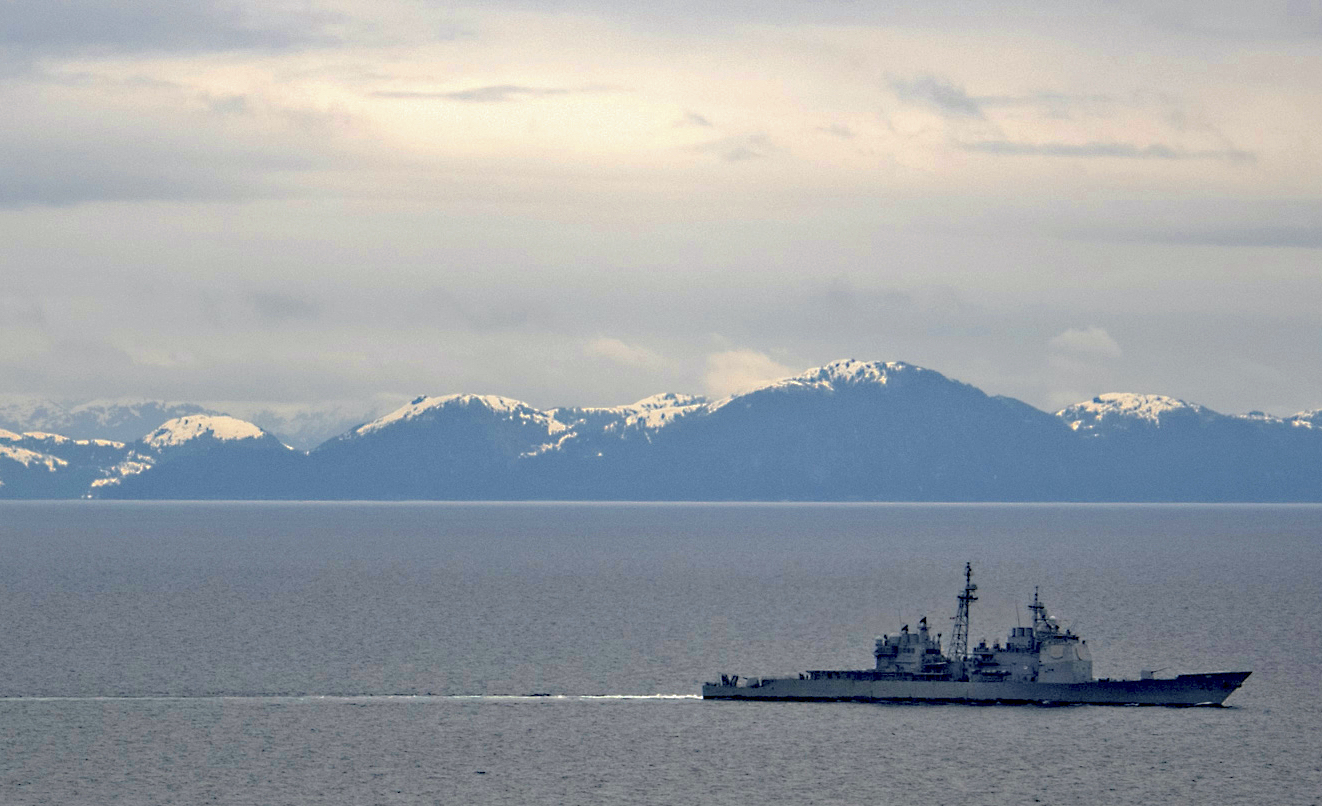
USS Bunker Hill (CG-52) transits the Gulf of Alaska as part of the Theodore Roosevelt Carrier Strike Group on May 8, 2021. US Navy Photo
- USS Bunker Hill (CG-52), homeported in San Diego, Calif.
Destroyer Squadron 23
Destroyer Squadron 23 is based in San Diego and is embarked on the carrier.
- USS Russell (DDG-59), homeported in San Diego, Calif.
In the North Arabian Sea
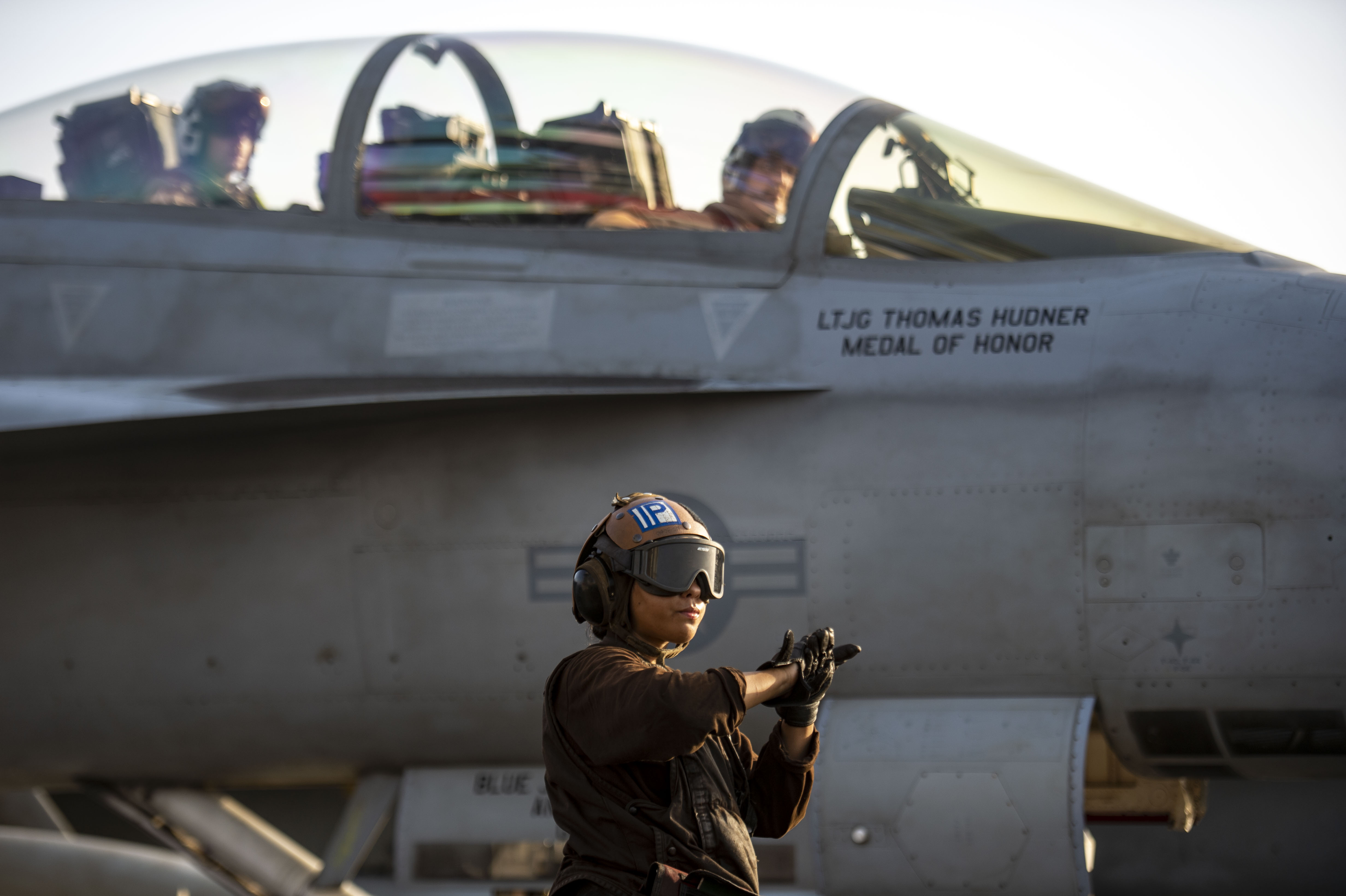
Aviation Electrician’s Mate 3rd Class Eudaliz Garcia conducts pre-flight checks on a F/A-18F Super Hornet fighter jet, attached to the ‘Fighting Swordsmen’ of Strike Fighter Squadron (VFA) 32, during flight operations aboard aircraft carrier USS Dwight D. Eisenhower (CVN-69) in the Arabian Sea on May 12, 2021. US Navy Photo
USS Dwight D. Eisenhower (CVN-69), Carrier Air Wing 3 and IKE’s escorts are operating in the North Arabian Sea after arriving in U.S. Central Command in early April to support the ongoing anti-ISIS Operation Inherent Resolve. CENTCOM commander Gen. Kenneth McKenzie requested that Secretary of Defense Lloyd Austin keep the strike group in CENTCOM instead of continuing with its planned operations in other regions to support the movement of U.S. military forces and equipment out of Afghanistan.
“A big reason that the Eisenhower was extended in the region… the main reason she was extended in the region was to provide additional capability and options to Gen. [Austin] Miller as he continues to affect the removal of U.S. forces from Afghanistan,” Pentagon spokesman John Kirby told USNI News last week.
The White House has set a Sept. 11, 2021, date to complete a troop withdrawal from Afghanistan, and it’s unclear what the carrier presence in the region will look after the deadline.
Earlier in May, Chief of Naval Operations Adm. Mike Gilday said Iran’s behavior and the ongoing review of U.S. world military presence would determine how carriers would operate in the Middle East after the Afghan withdrawal.
“My take is that we continue these negotiations with Iran on a [new nuclear deal], that hopefully Iran begins to behave in an acceptable way, and that would lead to a reduced requirement for… a carrier strike group presence,” he said while speaking at the United States Navy Memorial in Washington, D.C., reported USNI News.
Carrier Strike Group 2
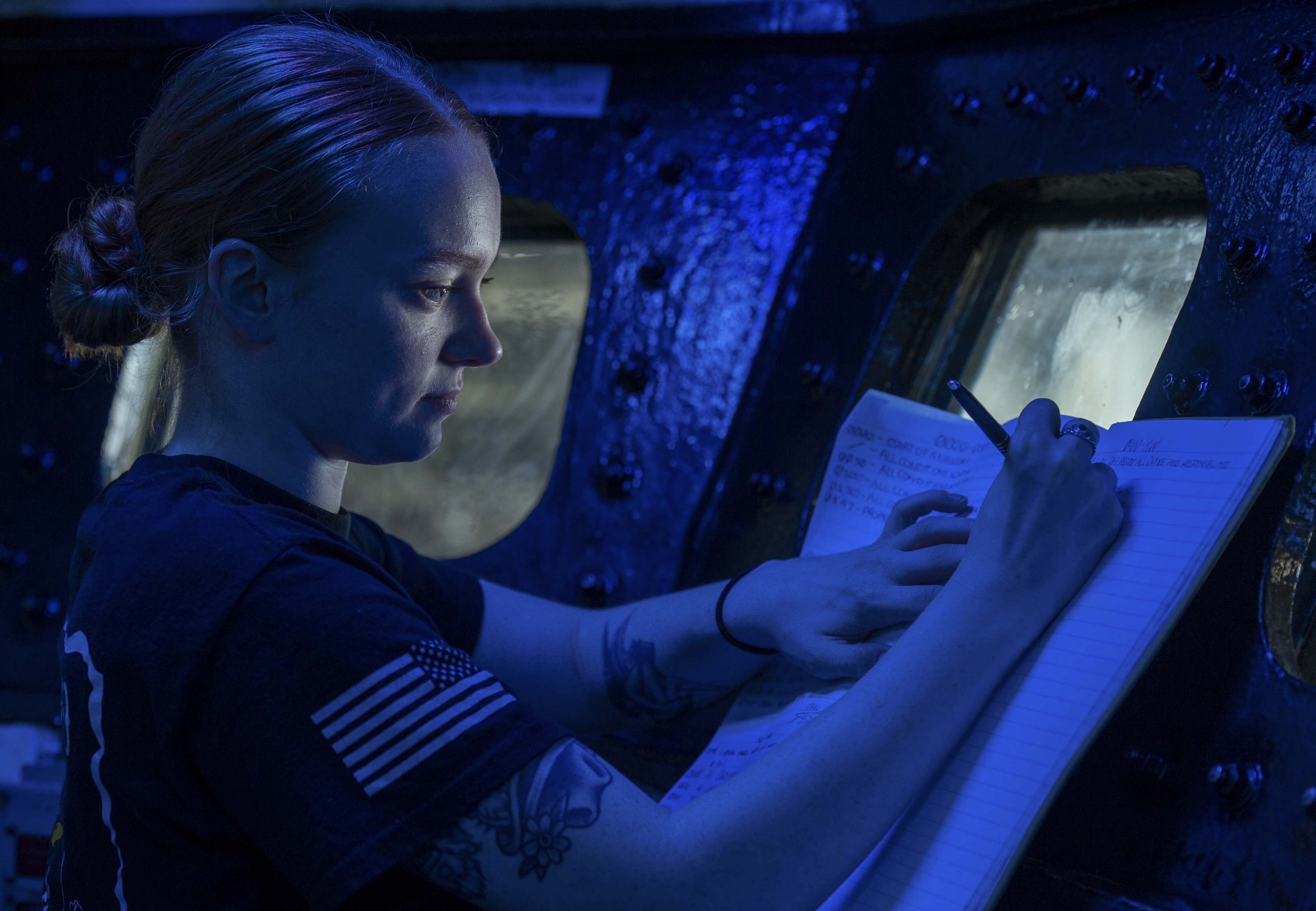
ARABIAN SEA (May 12, 2021) Aviation Boatswain’s Mate (Handling) Airman Morgan Ray logs readings while standing watch aboard the aircraft carrier USS Dwight D. Eisenhower (CVN-69) in the Arabian Sea on May 12, 2021. US Navy Photo
Norfolk-based CSG 2 commands the Dwight D. Eisenhower CSG and is embarked on the carrier.
Aircraft carrier
USS Dwight D. Eisenhower (CVN-69), homeported in Norfolk, Va.
Carrier Air Wing 3
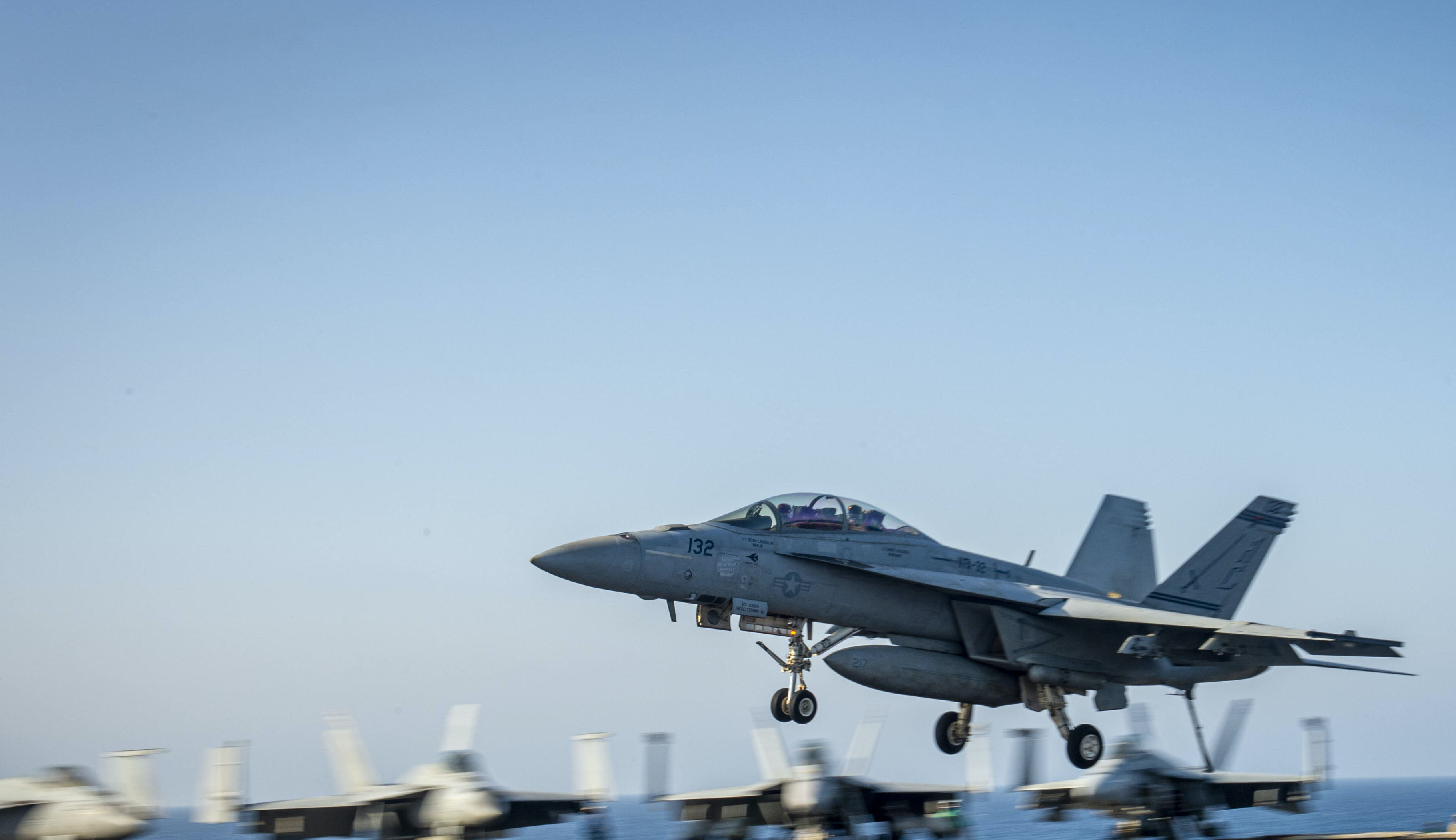
A F/A-18F Super Hornet fighter, attached to the ‘Fighting Swordsmen’ of Strike Fighter Squadron (VFA) 32, lands on the flight deck of the aircraft carrier USS Dwight D. Eisenhower (CVN-69) in the Arabian Sea on May 11, 2021. US Navy Photo
Carrier Air Wing 3, based at Naval Air Station Oceana, Va., is embarked aboard Dwight D. Eisenhower and includes a total of nine squadrons and detachments:
- The “Fighting Swordsmen” of VFA-32 – Strike Fighter Squadron (VFA) – from Naval Air Station Oceana, Va.
- The “Gunslingers” of VFA-105 from Naval Air Station Oceana, Va.
- The “Wildcats” of VFA-131 from Naval Air Station Oceana, Va.
- The “Rampagers” of VFA-83 from Naval Air Station Oceana, Va.
- The “Zappers” of VAQ-130 – Electronic Attack Squadron (VAQ) – from Naval Air Station Whidbey Island, Wash.
- The “Screwtops” of VAW-123 – Carrier Airborne Early Warning Squadron (VAW) – from Naval Station Norfolk, Va.
- The “Rawhides” of VRC-40 – Detachment – Fleet Logistics Support Squadron (VRC) – from Naval Station Norfolk, Va.
- The “Dusty Dogs” of HSC-7 – Helicopter Sea Combat Squadron (HSC) – from Naval Station Norfolk, Va.
- The “Swamp Foxes” of HSM-74 – Helicopter Maritime Strike Squadron (HSM) – from Naval Air Station Jacksonville, Fla.
Cruisers
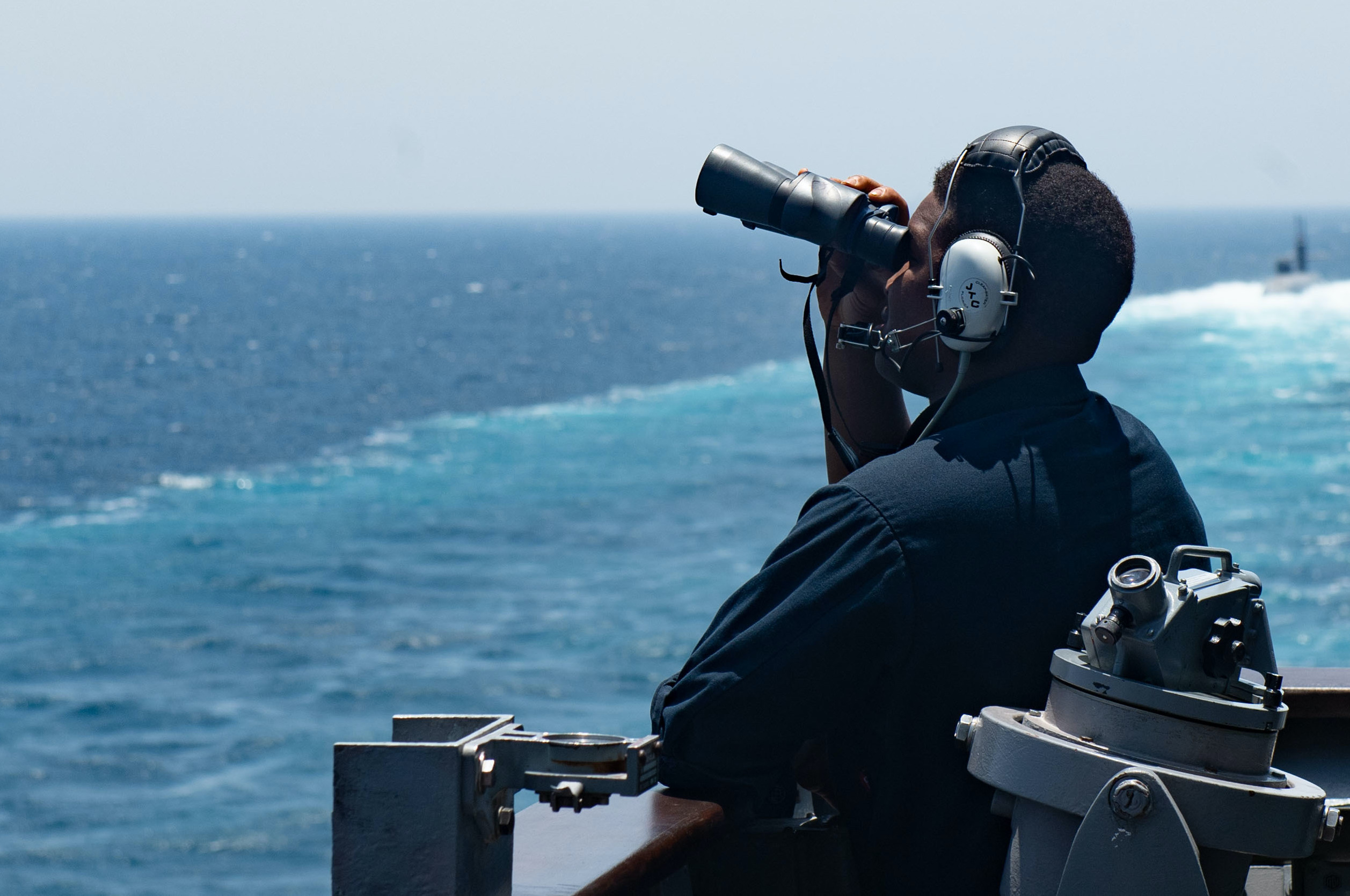
Seaman Andrew Hudson scans for air contacts aboard the guided-missile cruiser USS Monterey (CG-61) as the ship transits the Strait of Hormuz information with guided-missile submarine USS Georgia (SSGN-729), right, patrol coastal boats and Coast Guard patrol boats, assigned to Commander, Task Force (CTF) 55 on May 10, 2021. US Navy Photo
- USS Monterey (CG-61), homeported in Norfolk, Va.
- USS Vella Gulf (CG-72), homeported in Norfolk, Va.
Destroyer Squadron 22
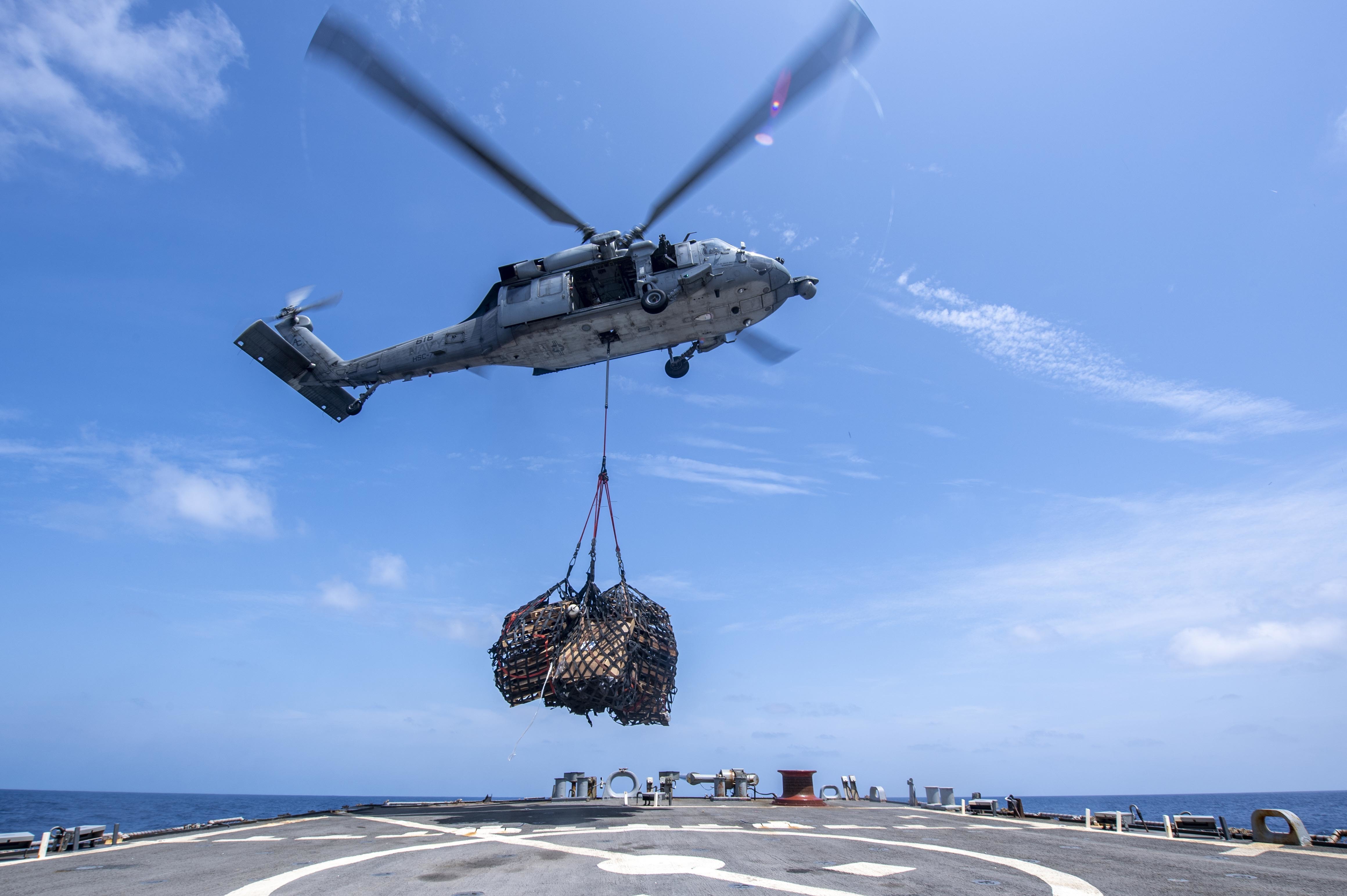
A MH-60S Knight Hawk helicopter, attached to the ‘Dusty Dogs’ of Helicopter Sea Combat Squadron 7, takes off from the flight deck of guided-missile destroyer USS Laboon (DDG-58) during a vertical replenishment-at-sea in the Arabian Sea on May 8, 2021. US Navy Photo
Destroyer Squadron 22 is based at Norfolk and its leaders are embarked on Eisenhower.
- USS Thomas Hudner (DDG-116), homeported in Mayport, Fla.
- USS Laboon (DDG-58), homeported in Norfolk, Va.
- USS Mitscher (DDG-57), homeported in Norfolk, Va.
- USS Mahan (DDG-72), homeported in Norfolk, Va.
In the Red Sea
The Coast Guard Sentinel-class fast response cutters USCGC Charles Moulthrope (WPC-1141) and USCGC Robert Goldman (WPC-1142) transited the Suez Canal on May 7 and are operating in the U.S. 5th Fleet area of operations.
They conducted a transit exercise on May 13 in the Red Sea with the Egyptian Navy frigate Taba and USS Mahan (DDG-72), reported Egypt Today.
Charles Moulthrope and Robert Goldman are traveling to their new forward-deployed homeport in Bahrain to replace decommissioning Island-class patrol boats as part of the U.S. Coast Guard’s Patrol Forces Southwest Asia (PATFORSWA).
Moulthrope and Goldman are the first two of six Sentinel-class ships scheduled to join PATFORSWA, which is assigned to Commander, Task Force (CTF) 55. Established in 2002 to support Operation Iraqi Freedom, PATFORSWA is the U.S. Coast Guard’s largest unit outside of the United States.
In the Eastern Atlantic

An AV-8B Harrier jet, attached to Marine Medium Tiltrotor Squadron (VMM) 162 (Reinforced), prepares to land on the flight deck of the Wasp-class amphibious assault ship USS Iwo Jima (LHD-7) on May, 12, 2021. US Navy Photo
The Iwo Jima Amphibious Ready Group and the 24th Marine Expeditionary Unit are in the Eastern Atlantic, just northwest of Scotland.
Wasp-class amphibious assault ship USS Iwo Jima (LHD-7), Harpers Ferry-class dock landing ship USS Carter Hall (LSD-50) and amphibious transport dock USS San Antonio (LPD-17) make up the ARG. Embarked detachments for the Iwo Jima ARG include Amphibious Squadron Four, Fleet Surgical Team (FST) Six, Helicopter Sea Combat Squadron (HSC) 26, Tactical Air Control Squadron (TACRON) 21, Naval Beach Group (NBG) Two, Beach Master Unit (BMU) Two, Assault Craft Unit (ACU) Two and Four, and Sailors from Amphibious Construction Battalion (ACB) Two.
The 24th MEU, which is headquartered at Marine Corps Base Camp Lejeune, N.C., consists of a ground combat element, Battalion Landing Team (BLT) 1/8, a logistics combat element, Combat Logistics Battalion (CLB) 24, and an aviation combat element, Medium Tilt-Rotor Squadron (VMM) 162 Reinforced. The 24th MEU also includes a Light Armored Reconnaissance detachment.
In the Mediterranean Sea
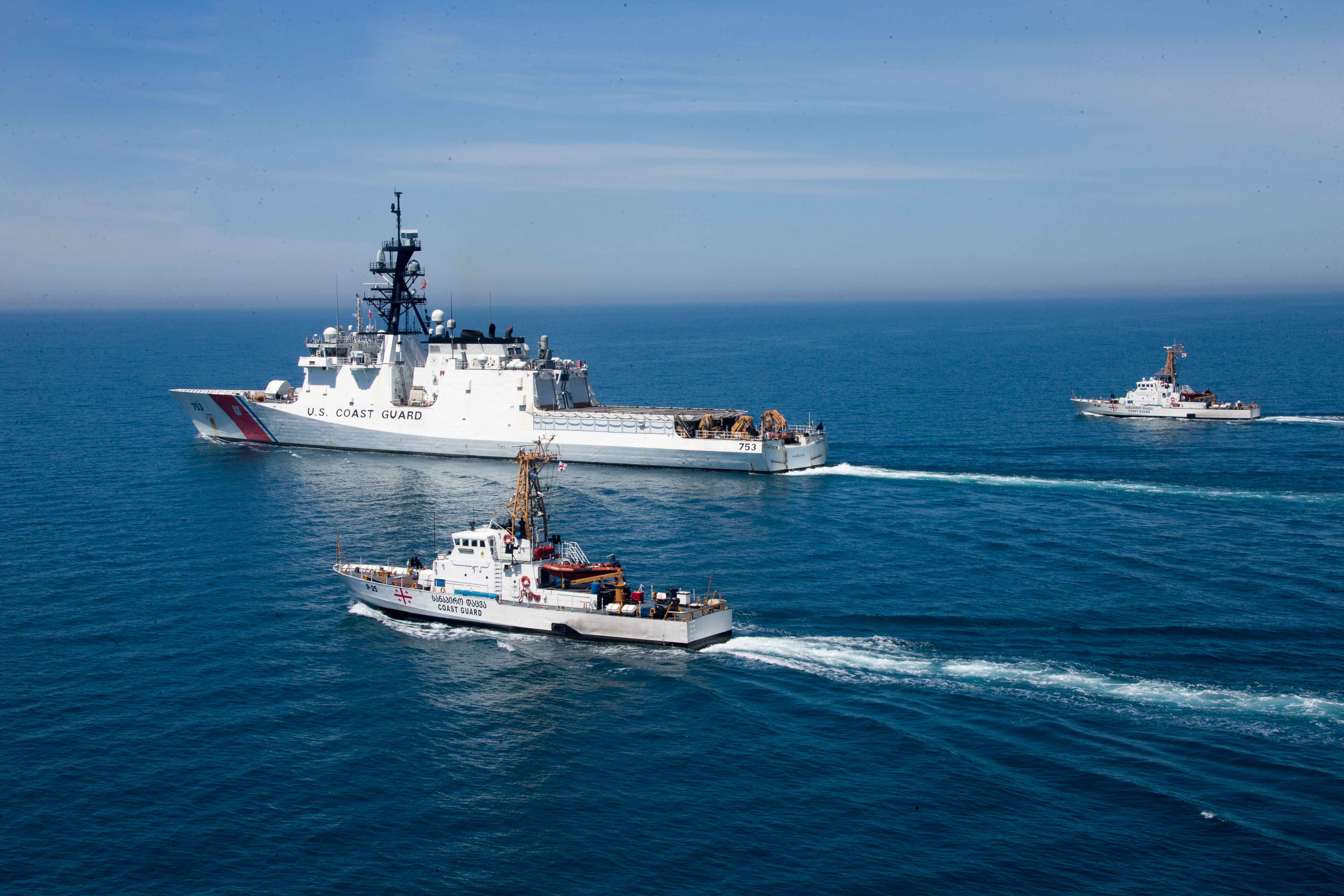
USCGC Hamilton (WMSL-753) and Georgian coast guard vessels Ochamchire (P-23) and Dioskuria (P-25) conduct underway maneuvers in the Black Sea, May 2, 2021. US Coast Guard Photo
According to the Coast Guard, “The Legend-class national security cutter USCGC Hamilton (WMSL 753) transited from the Black Sea to the Mediterranean Sea, concluding the crew’s recent Black Sea operations and engagements, May 14, 2021.”
Hamilton entered the Black Sea in April as part of the first cutter to visit the Black Sea since 2008. The last U.S. Coast Guard cutter to visit the Black Sea, USCGC Dallas (WHEC-716), sailed to the Black Sea twice, in 2008 and 1995.
During its mission in the Black Sea, the cutter drilled with Turkish Navy Yavuz-class TCG Turgutreis (F 241), Georgian coast guard vessels Dioskuria (P 25) and Ochamchire (P 23) and Ukrainian navy vessel Island-class patrol boat Starobilsk (P 241) and Ukrainian border guard vessel Kuropiatnikov (BG 50), May 9th to 10th.
“The Hamilton crew conducted its final operations in the Black Sea with Romanian Navy Frigate Mărășești (F111) and Bulgarian corvette Bodri (BGS 14) on May 13, 2021,” according to the Coast Guard.
In the Western Atlantic
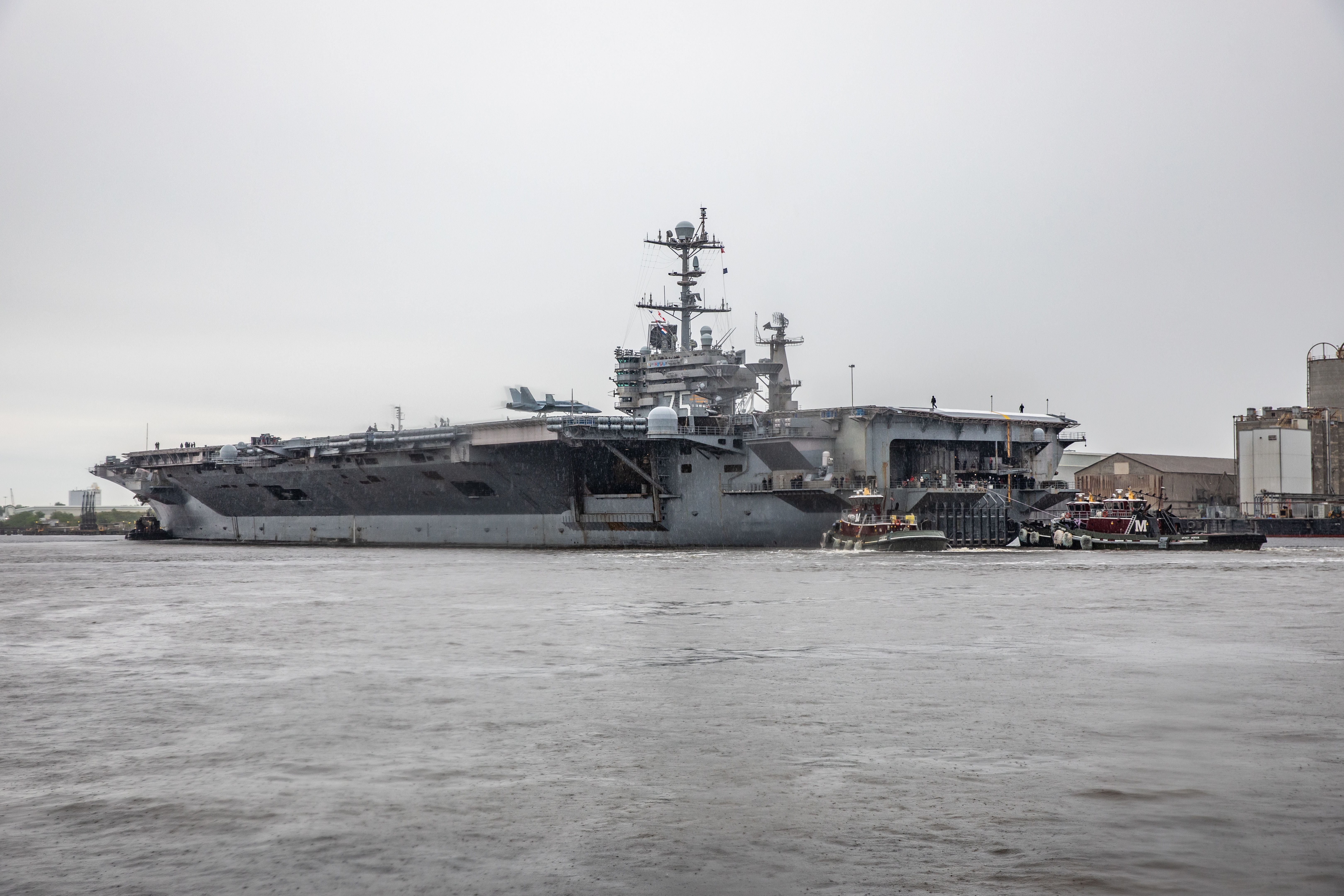
USS Harry S. Truman (CVN-75) departed Norfolk Naval Shipyard (NNSY) for sea trials on May 12 following completion of its Extended Carrier Incremental Availability (ECIA). US Navy Photo
Aircraft carrier USS Harry S. Truman (CVN-75) is out of maintenance at Norfolk Naval Shipyard and is underway in the Virginia Capes for sea trials.
Truman went into the shipyard in July 2020 for a modified repair period following back-to-back deployments. Instead of spending seven months in the yard for a full planned incremental availability, the ship was planned to spend the same amount of time in the yard for a new type of repair called an extended carrier incremental availability, USNI News previously reported. Due to delays, the ECIA took 10 months.
In the Eastern Pacific
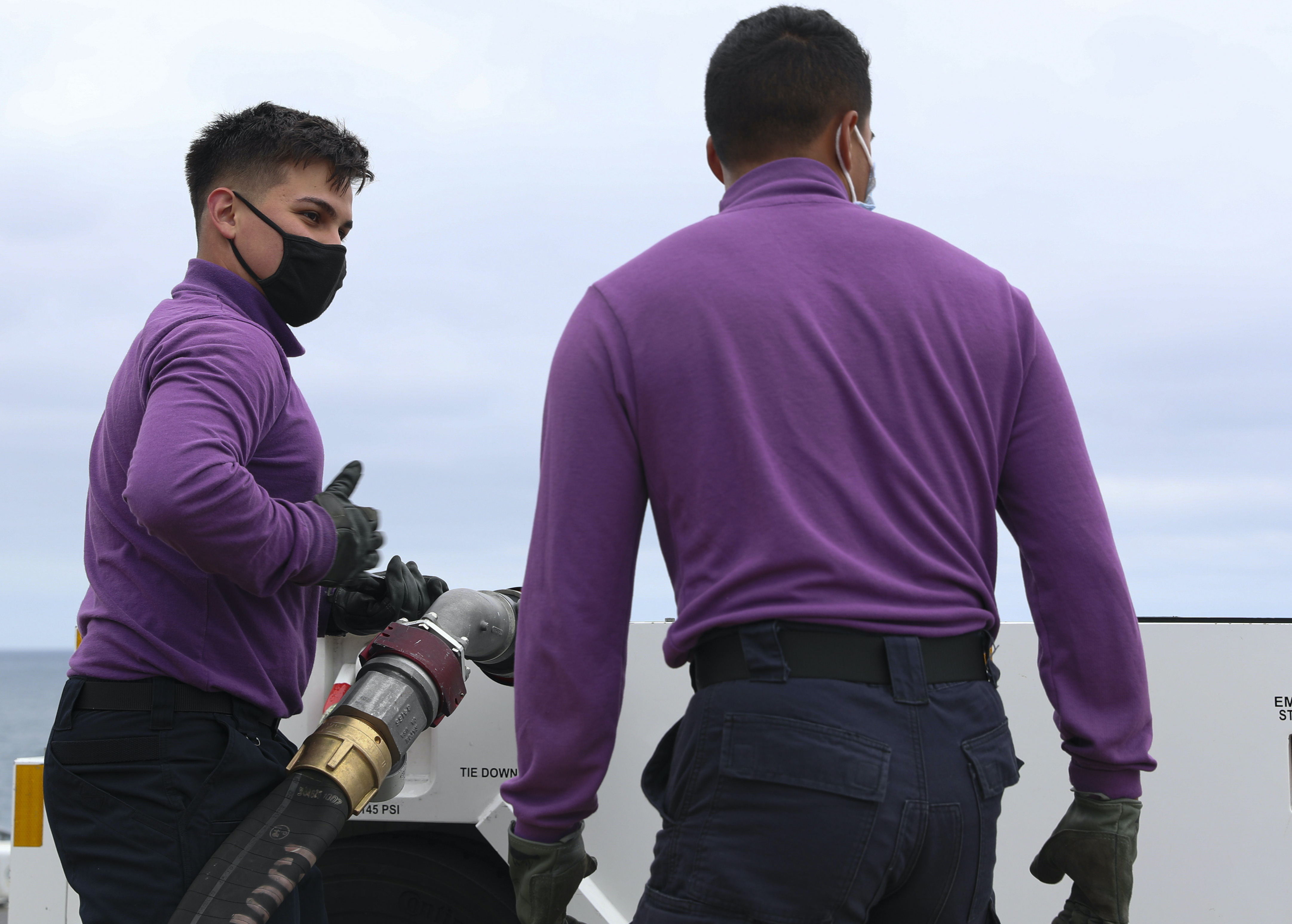
Aviation Boatswain’s Mate (Fuels) Airman Enrique Allred, left, from Pucallpa, Peru, and Airman Andres Henriquez, from Fredrick, Md., participate in aircraft refueling training on the flight deck aboard amphibious assault ship USS Tripoli (LHA-7) on May 15, 2021. US Navy Photo
The Essex Amphibious Ready Group (ARG) and the amphibious assault ship USS Tripoli (LHA-7) are underway in the Southern California Operating Areas.
In addition to these major formations, not shown are thousands of others serving in submarines, individual surface ships, aircraft squadrons, SEALs, Special Purpose Marine Air-Ground Task Forces, Seabees, Coast Guard cutters, EOD Mobile Units, and more serving throughout the globe.

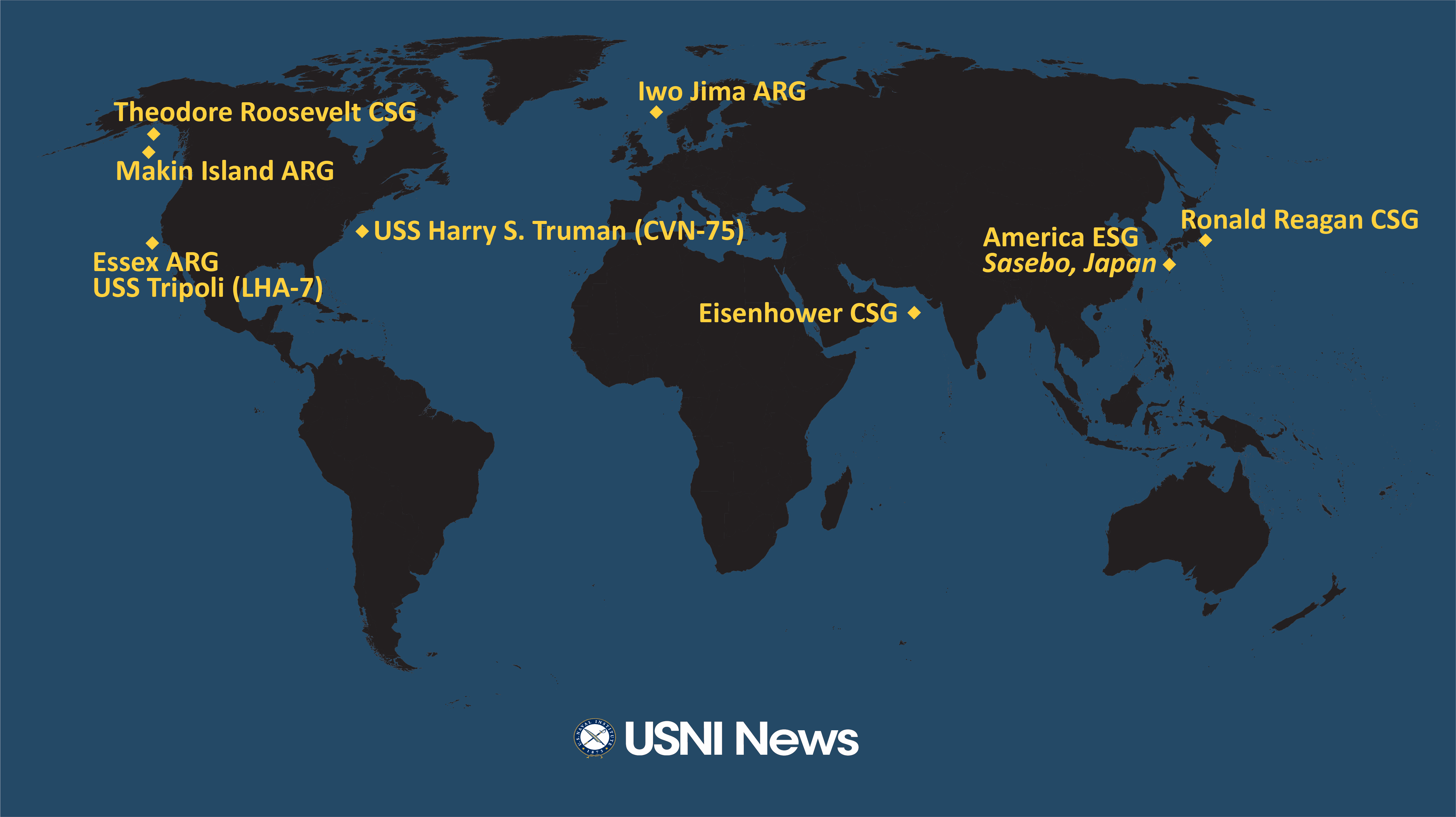
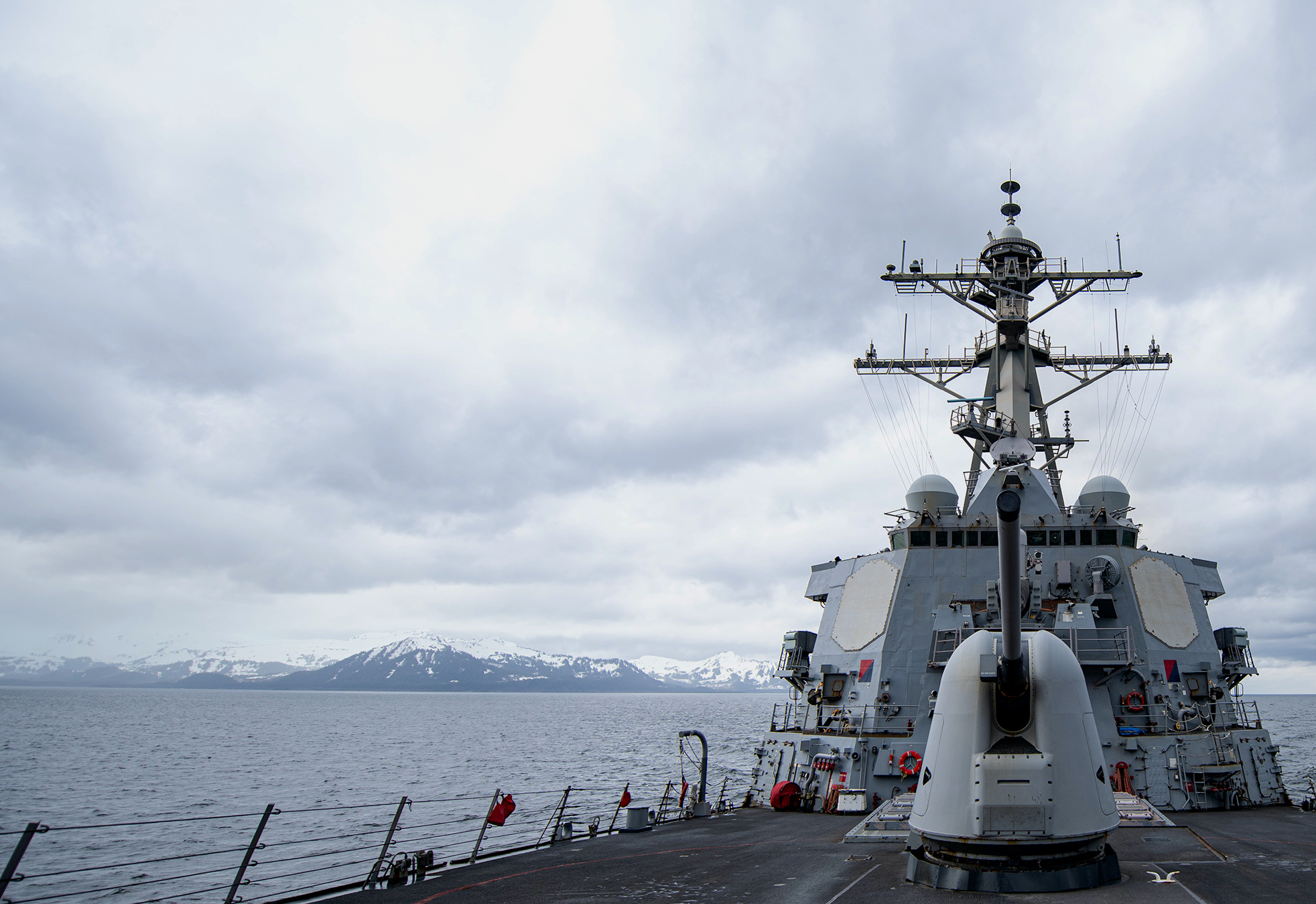
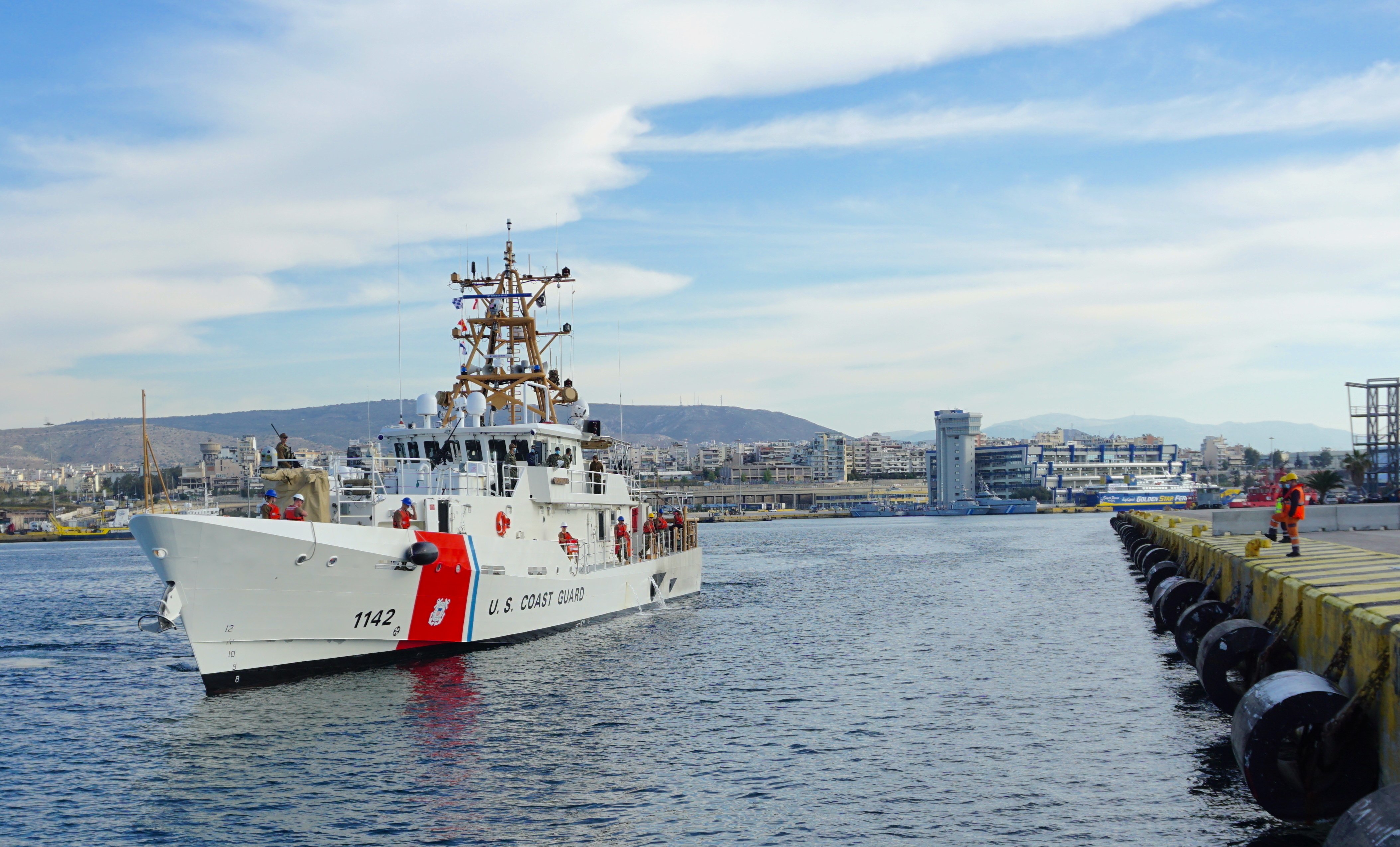












No comments:
Post a Comment
How did you like the post, leave a comment. I would appreciate hearing from you all. Best wishes from JC's Naval, Maritime and Military News